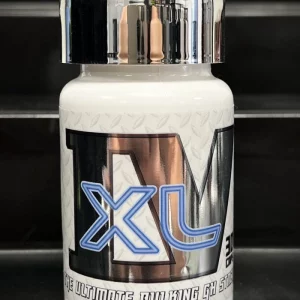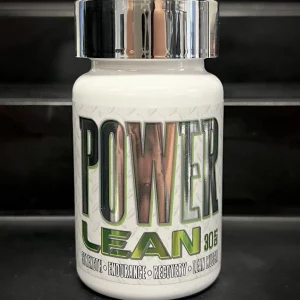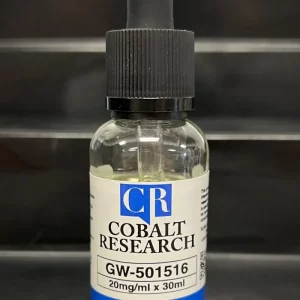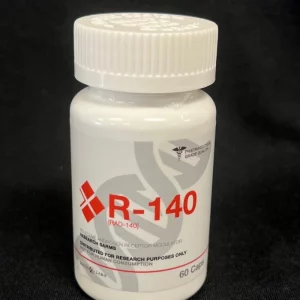Rad-150 (TLB-150) is a next-generation selective androgen receptor modulator (SARM) structurally related to RAD-140 (Testolone). It is engineered for higher metabolic stability and longer half-life, making it a compound of strong interest in research on muscle growth, recovery, and body composition.
Product Details
-
Compound: Rad-150 (TLB-150)
-
Class: SARM (selective androgen receptor modulator)
-
Form: Liquid
-
Concentration: 20mg/ml
-
Volume: 30ml vial
-
Application: Research and laboratory studies
Pharmacological Insights
-
Androgen receptor affinity: Comparable to RAD-140, but with enhanced esterification, resulting in extended metabolic half-life (estimated 48–60 hours).
-
Anabolic potential: Increases lean muscle hypertrophy, nitrogen retention, and power output in research subjects.
-
Stability: More resistant to enzymatic breakdown than earlier SARMs, offering longer activity between doses.
-
Testosterone suppression: Like other SARMs, Rad-150 suppresses endogenous hormone production in dose-dependent models.
-
Cycle length: Research often spans 8–12 weeks, with dosing structured to evaluate muscle gain and fat loss.
Documented Research Applications
-
Muscle Growth and Strength
-
Increased protein synthesis observed in androgen-responsive tissue.
-
Supports faster hypertrophy compared to placebo models.
-
-
Body Fat Reduction
-
Promotes leaner body composition with measurable decreases in fat mass.
-
Synergistic effects when combined with calorie restriction or endurance training.
-
-
Bone Density and Recovery
-
Androgen receptor stimulation contributes to bone strength in preclinical studies.
-
Faster recovery after musculoskeletal stress.
-
-
Comparative SARM Analysis
-
Rad-150 shows improved duration of effect compared to RAD-140, reducing frequency of administration.
-
Rad-150 FAQs (Aligned with Search Queries)
1. What is Rad-150?
Rad-150, also called TLB-150, is an esterified form of RAD-140. It is studied as a selective androgen receptor modulator (SARM) with anabolic properties and extended half-life.
2. How does Rad-150 differ from RAD-140?
Rad-150 carries an ester modification, giving it a half-life of 48–60 hours, compared to RAD-140’s ~24 hours. This provides longer activity with fewer administrations.
3. What does Rad-150 do in research?
Rad-150 increases lean muscle, reduces fat mass, and enhances bone density markers, according to preclinical studies.
4. What is the dosage of Rad-150 Liquid?
This vial contains 20mg/ml in a 30ml solution. Research cycles often range from 10–30mg per day in liquid administration studies.
5. How to take Rad-150 liquid in research models?
Rad-150 liquid is administered orally in measured milliliters. At 20mg/ml, 0.5ml delivers 10mg, while 1ml delivers 20mg.
6. What is a Rad-150 cycle?
Research cycles typically last 8–12 weeks, with dosing adjusted to evaluate strength gains, fat reduction, and recovery.
7. How fast does Rad-150 kick in?
Performance outcomes are often noted within 2–3 weeks, with lean mass improvements becoming more evident over longer cycles.
8. Does Rad-150 require PCT?
Like RAD-140, Rad-150 suppresses testosterone. Post-cycle therapy (PCT) protocols are studied to normalize natural hormone levels after research cycles.
9. What is the half-life of Rad-150?
Rad-150’s ester modification gives it an extended 48–60 hour half-life, reducing dosing frequency compared to RAD-140.
10. Is Rad-150 a steroid?
No. Rad-150 is a non-steroidal SARM. It binds androgen receptors selectively without being a testosterone derivative.
11. What are the benefits of Rad-150 in research?
The main benefits include:
-
Muscle hypertrophy
-
Fat mass reduction
-
Longer active duration
-
Improved recovery rates
-
Bone density support
12. What are the possible side effects of Rad-150?
Studies show suppression of natural testosterone, potential lipid alterations, and androgenic side effects at higher doses.
13. How is Rad-150 compared to other SARMs?
Rad-150 is stronger than Ostarine or LGD-4033, and longer-lasting than RAD-140, making it one of the more potent SARMs under investigation.
14. How many ml of Rad-150 equal a typical dose?
At 20mg/ml, a 20mg dose requires 1ml. Researchers calculate dosing in precise milliliters for consistency.
15. Does rad 150 increase testosterone?
Yes, it does increase testosterone.
Related products
MK677 Capsules (High Dose, Best Seller)
In stock
Ostarine (high dose)
In stock
















